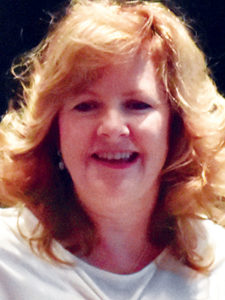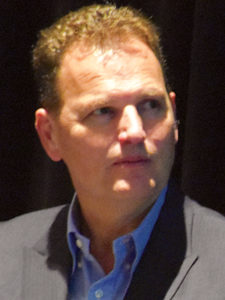
For being a “young” medical specialty, great progress has been made in rheumatology. However, the expected workforce shortage by 2030 will require profound changes to accommodate the expected increase in the number of patients with rheumatic diseases.
Iain B. McInnes, PhD, FRCP, FRSE, FMedSci, Professor of Rheumatology, University of Glasgow, UK, and Barbara Slusher, MSW, PA-C, DFAAPA, Assistant Professor of Instruction in the Department of Physician Assistant Studies (PAS) at the School of Health Professions at The University of Texas Medical Branch, took attendees on a journey from the early days of rheumatology to what the profession will look like by 2030 during Sunday’s ARHP Keynote Address 2030: A Rheumatology Odyssey.
“When we think about what has happened in the last couple of decades, it is nothing short of remarkable,” said Dr. McInnes. “But there are challenges on the horizon. One of the challenges is that what we’re doing costs money.”

However, noted Slusher, cost savings happen when integrating nurse practitioners, physician assistants (PAs) and other health care professionals into the practice team.
“We do know that the data does show for the past 50 years that we do provide a cost savings, and that we do make a difference and improve patient outcomes, safety, patient education, and shared decision making,” she said, adding that even with including the expected numbers of other professionals, demand will exceed supply by 4,000 clinical full-time equivalents by 2030.
Slusher described an integrated practice unit at the University of Texas Dell Medical School that encompasses PAs, chiropractors, dieticians, social workers, and others. She noted, however, that a culture change is vital to creating these dynamic teams. At her institution, they’ve developed interprofessional education as a move toward that culture change.
“You have multiple professions come together and learn together how to work in a team. What’s different about this is that we’re actually putting them into practice, so when they go to do their practicum, they’ll actually be with other students and they actually do a project together so that they’re actually reflecting on working in that team, and it really makes a difference for a respect and understanding of other professions’ roles,” she said.
Dr. McInnes noted that, from a clinical standpoint, a shift to preventing disease rather than treating disease will become more of a focus.
He said polyomic medicine, or practicing medicine at the molecular level rather than the organ level, will guide decisions about prevention and treatment.
“We’d like to make a molecular diagnosis to get the right medicine at the right time at the safest dose, when it has the best chance of preventing damage, addressing the totality of the disease and not just the identifiable measures,” he said. “What an extraordinary opportunity precision medicine will offer us.”
For example, using genetic profiles and epigenetics, physicians can predict 90 percent of the patients who will not respond to methotrexate, he said, allowing them to try the next possible solution without wasting three to six months on a drug that doesn’t work.
“That’s the real joy of molecular medicine in 2030,” he added. “Molecular medicine will give us back the power to make the right decision for people. We will finally know the person the disease has rather than the disease that has the person.”
